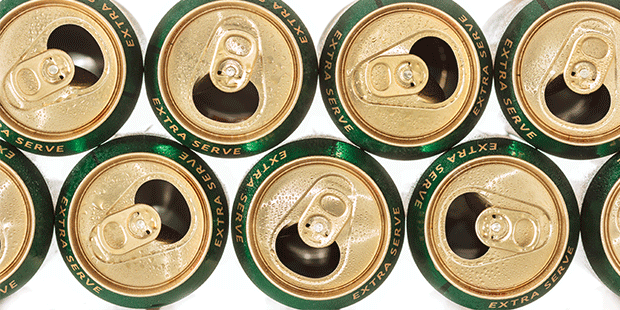Four years ago, the writing was on the wall for beer bottles.
Everyone from NPR to Business Insider was covering the environmental benefits and convenience of beer in cans. And that, as opposed to glass bottles, aluminum prevents any light whatsoever from getting through and damaging delicious libations.
Local breweries like Discretion and Santa Cruz Mountain Brewing have since begun canning some varietals, and Uncommon Brewers—which has only ever done cans—appears more popular than ever. Canned wine has even started taking off.
And yet when you go to the grocery store shopping for Deschutes Black Butte Porter or Lagunitas’ Censored Ale, you will—like it or not—be headed out the door with a six-pack of bottles.
That, of course, is a shame for those of us who love drinking classic West Coast craft brews, but also enjoy the taste of crisp beer out of a can.
As my cousin Mike told me last weekend, “I don’t know why anyone’s still putting beer in bottles.”
Oliver Carter, beer and wine manager for New Leaf Community Markets, says canned beer accounts for about 20 percent of their beer sales—a force to be reckoned with, for sure, but by no means the aisle’s dominating force. Carter says he still prefers drinking beer out of bottles, although he can’t exactly pinpoint why, conceding that it may have something to do with the “stigma” of sipping beer out of a can. His bottle-loving druthers apply to most, though not all, brews.
“I actually prefer drinking Sierra Nevada beer out of the can,” he says. “I don’t know what it is. They’re very clear about it being the same beer. It just seems like it tastes less malty or something.”
As someone who never enjoyed Sierra Nevada Brewing’s pale ale until it came out in cans five years ago, I can attest to that difference in taste being totally real. Or is that bias all in my head?
Discretion brewmaster Michael Demers says there isn’t any difference between drinking out of a can or a bottle, for Sierra Nevada or any other brand. And, either way, the taster should pour their drink into a glass no matter what, so they can smell it, he adds. But when he finds himself in dire straits and cups aren’t available, Demers says he too still prefers bottles.
“Something about the way that a bottle feels coming to your lips is more satisfying than the way a can feels,” he explains. “But if I’m going camping, I would rather bring cans, because they’re lighter and easier to get rid of. Just crush ’em up and put ’em back in your pack.”
These days, Discretion bottles four types of beers: Uncle Dave’s Rye IPA, Shimmer Pils, Darjeeling Lager and one rotating seasonal. Its first canned creation, the recent Submarine Canyon, was a fundraiser for Save Our Shores that flew off store shelves. Demers will soon begin work on Discretion’s second canned beer—a pale, heavy on the mosaic hops that has performed well in both tap rooms and keg sales.
In the brewing industry (like any other), the trailblazers of previous generations often show more reluctance to dive head first into the latest craze. Lagunitas Brewing, which is based in Petaluma, finally came out with its first canned beer, the 12th of Never, last summer. The name is a nod to the now-broken promise it made to never, ever sell beer in cans.

